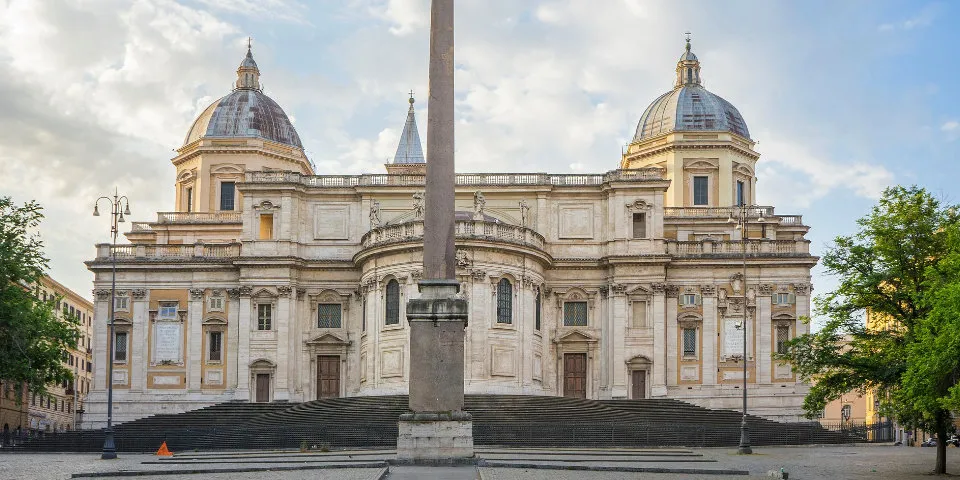
Santa Maria Maggiore
History and Historical Significance
The Basilica of Santa Maria Maggiore stands as a beacon of Marian devotion in the heart of Rome, dating back to the 4th century AD when it was erected on the majestic summit of the Esquiline Hill. Its foundation, imbued with a legend of heavenly grace, tells of a vision of the Madonna who, with a summer snowfall, indicated the sacred place to build the church. This story, steeped in mysticism and miracle, has captured the imagination of believers through the centuries, transforming Santa Maria Maggiore into a tangible symbol of divine presence in everyday life.
Architecture and Artistic Beauty
The architecture of the basilica, with its Romanesque facade towering against the Roman sky, invites contemplation and veneration. Once inside, the eyes are captivated by the magnificence of the Byzantine mosaics and Renaissance artworks adorning the walls, transporting visitors into a world of beauty and spirituality. But it is the wooden ceiling of the transept, with its intricate carvings and grandeur, that represents one of the most distinctive and fascinating features of the church, evoking a sense of reverence and wonder in those who behold it.
Religious and Cultural Significance
Santa Maria Maggiore is much more than just a church; it is a sacred place imbued with meaning and Marian devotion. Here, the faithful gather with hearts full of hope and gratitude to participate in liturgical celebrations and to pray before the revered icon of the Salus Populi Romani. This sanctuary, a focal point for Catholics devoted to the Madonna, represents an oasis of peace and reflection in the pulsating heart of Rome, offering spiritual comfort and a tangible connection with divinity to all who set foot within.